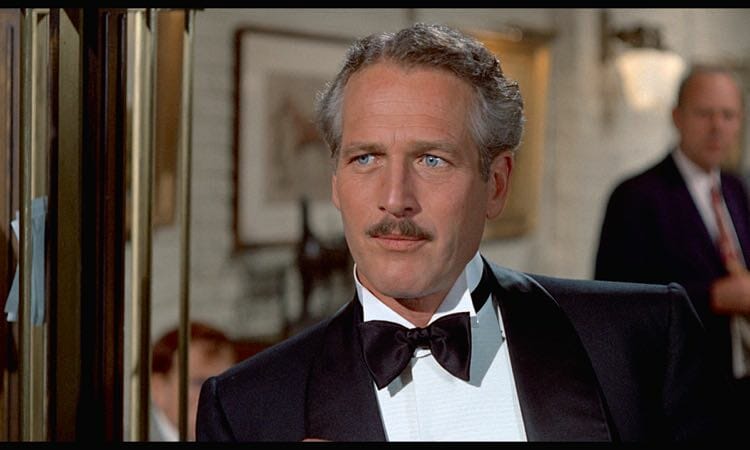Sign up for the
TSL Newsletter
and get $50 off Final Draft 12
By Bhargav Prasad · November 12, 2014

Long before Guy Ritchie’s Cinema celebrated being on the other side of the law, George Roy Hill with screenwriter David S.Ward brought to the screen what is now celebrated as a template for modern crime capers.
The Sting, released in 1973 is set in economically deprived Chicago in the 1930's and follows two Conmen and their complicated cons. Complicated is an understatement given the kind of elaborate cons these two con-men indulge in. What starts out as just another gig involving big money turns into a tale of revenge when the mob starts pursuing them.
George Roy Hill’s film before this one was the celebrated Butch Cassidy and The Sundance Kid. The film that inspired a generation of filmmakers and a film festival too. The two leading men from that cult, Robert Redford and Paul Newman reprise similar protagonist roles in this film as well.
Paul Newman has often been noted for playing characters that are in trouble with the law. Cool Hand Luke, The Hustler, The Color of Money to name a few. What’s common between these characters other than the obvious answer which is Newman himself is that there is a sense of charm and style that lingers around them. Often cited as the bad boy of Hollywood, Newman gives his anti-hero characters a certain finesse that makes you root for them no matter how rugged and thug-like they are.
This is exactly what Hill does to keep the film engaging. Yes it does follow a certain style that was intact and one of a kind when it was released, but the characters he creates, with the help of screenwriter Ward, isn’t just for comic relief and delivering lines. Intact leading man Robert Redford was nominated for an Oscar in the category, Best Actor in a Leading Role.
No matter how ridiculously complex the cons might be, the writing is never that complex. It is surprisingly linear and simple for a caper this complicated. And for the most part, this works in the film’s favour, but at certain places it does fail. When following a certain kinetic style to the movement, the kind you often see in Guy Ritchie films today, the linear storytelling doesn’t always complement the medium.
There have been studies and even books written about this screenplay, but the visual style and the charm with which the film progresses hasn’t been spoken about much. Certain scenes which have only two characters talking could have been shot rather easily. A static camera and maybe a few closeups here and there. But that’s not what Hill does. Instead he intensifies the drama in a scene and builds it up to a certain level that doesn’t require extrapolation.
The camera usually follows the characters, often giving the film a voyeuristic feel and gives us a sense of listening in or eavesdropping on the characters. This works in favour of the film’s plot too.
The wit and humour resembles that of Robert Altman. Many have drawn parallels with Robert Altman’s works. But The Sting is a classic case where a lot has gone into the style over substance element and again the style is kinetic yet calculated, and it is part of the substance.
Having been nominated for 10 Oscars and winning 7 of them, The Sting is definitely a comic caper that hits most of the right notes and brings a certain suave to the genre that can, otherwise, sometimes be infested with blood and gore.